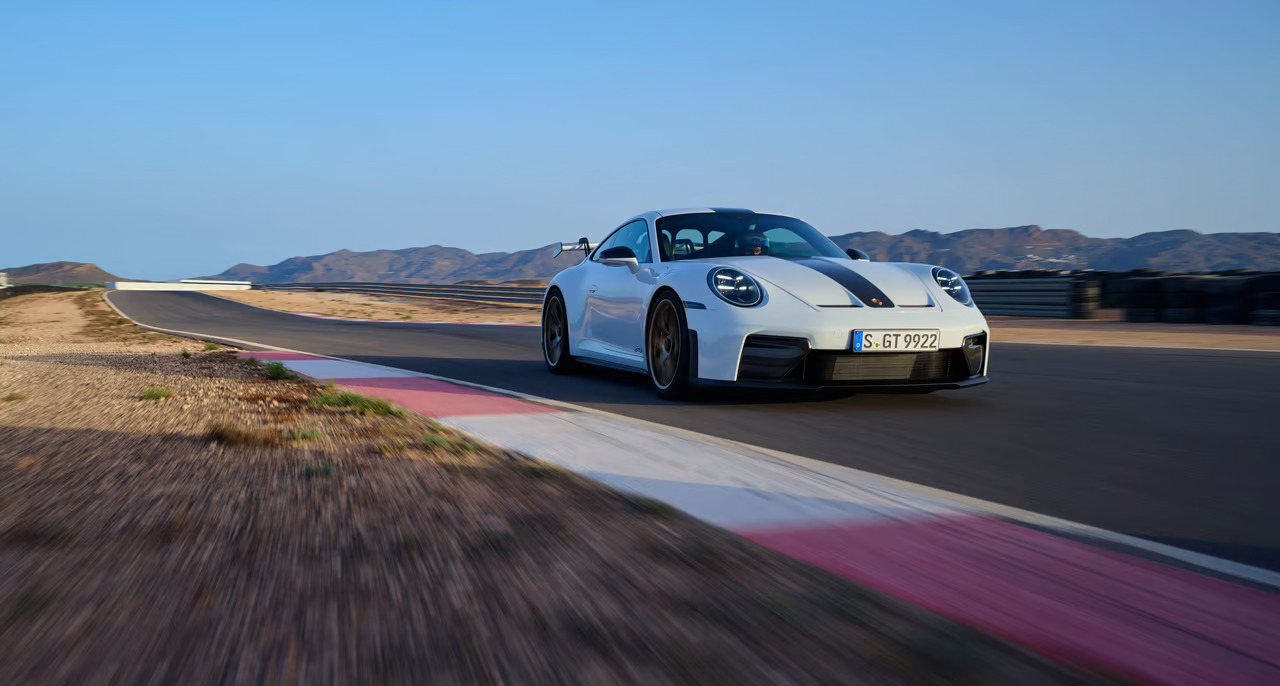The Porsche 911 GT3, for 25 years, has been the embodiment of driving pleasure for enthusiasts. While other 911 variants like the Turbo offer more speed for everyday use, and the Cabriolet adds open-air charm, the GT3 stands out for its raw, visceral driving experience. Its high-revving, naturally aspirated engine and stiff suspension make it a car for purists. Now, as Porsche reveals the latest GT3 for the 992.2 generation, it’s worth reflecting on the rich heritage that shaped this iconic model, beginning with the 996 generation.
Introduced at the turn of the millennium, the 996 GT3 emerged during a controversial time for Porsche as the company transitioned to water-cooled engines. The 996’s interior quality and exterior design drew some criticism, compounded by mechanical issues like the intermediate shaft bearing (IMS) failure.
However, the GT3’s introduction in 1999 overshadowed these concerns, powered by a 3.6-liter flat-six derived from Porsche’s racing heritage, affectionately called the “Metzger” engine. With its 355 hp output, light chassis, and impressive Nürburgring lap time, the 996 GT3 set a new standard for performance. The U.S. market received the GT3 four years later with even more power, spinning to a thrilling 8200 rpm and making it a driver’s favorite.
With the 997 generation, Porsche enhanced the GT3 formula. The model maintained its manual transmission, a feature that still defines the GT3 experience, particularly in the U.S., where 70% of buyers opted for the manual. This generation introduced Porsche’s Active Suspension Management system, improving handling, while engine displacement grew to 3.8 and eventually 4.0 liters. The GT3 RS, debuting in the U.S. in 2007, added further track-focused elements, including carbon fiber and lightweight rear glass, reducing the car’s weight and sharpening its performance even more.

In the 991 generation, Porsche introduced its PDK dual-clutch transmission for the first time in a GT3, a move reflecting the evolution of modern racing. The car’s power increased to 469 hp, and its Nürburgring lap times dropped significantly. However, customers missed the engagement of a manual gearbox, prompting Porsche to reintroduce it in 2018 alongside a 4.0-liter engine producing 500 hp. The GT3 Touring, another variant introduced, came without the flashy rear wing, appealing to enthusiasts who preferred a more subtle appearance but still craved the ultimate driving experience.
The 992 generation, launched for the 2022 model year, brought racing technology to the street in unprecedented ways. The most noticeable change was the swan-neck rear wing, a clear signal of the car’s track-focused intentions, complemented by a new multilink front suspension. For the 2025 model year, the GT3 was initially offered only in RS guise, equipped with advanced aerodynamics, including a drag-reduction system borrowed from Formula 1. These features gave the GT3 RS a remarkable 1.16 g on the skidpad, highlighting its extraordinary grip and agility.
Despite its race-ready capabilities, the GT3 RS remains a car that can be driven on the road with ease. While it may be as hardcore as Porsche can make a street-legal 911, the car’s cabin is practical and comfortable, with good visibility and sufficient space. This balance between racecar performance and everyday usability has always been the hallmark of the GT3, making it the ultimate enthusiast version of the 911 and cementing its place as a favorite among purists for over two decades.

